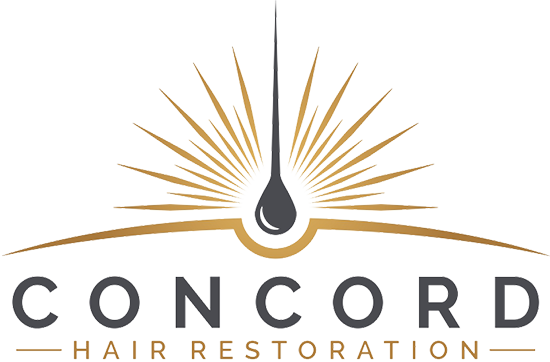Hair loss is a common concern for many individuals, and hair transplants have emerged as a popular solution to address this issue. When considering a hair transplant, it is crucial to understand the concept of donor hair and its significance in the transplantation process. This comprehensive guide aims to provide you with a deep understanding of donor hair for hair transplants, shedding light on its characteristics, extraction methods, and the factors that contribute to its success.
Understanding Donor Hair for Hair Transplants
Donor hair refers to the hair follicles that are harvested from a specific area of your scalp and transplanted to the recipient area, which is the region experiencing hair loss. The donor area is typically located at the back or sides of the head, as these regions are genetically resistant to the effects of hair loss. Understanding the characteristics of donor hair is essential to ensure successful and natural-looking hair transplants.
Characteristics of Donor Hair
Donor hair possesses unique characteristics that make it suitable for transplantation. These characteristics include:
- Density: Donor hair usually has a higher density compared to the hair in the recipient area, ensuring sufficient coverage and a fuller appearance.
- Texture: The texture of donor hair plays a crucial role in achieving natural-looking results. Matching the texture of the recipient area with the donor hair helps create a seamless blend.
- Color: Donor hair color should match the color of the recipient area for a harmonious outcome. Hair transplant surgeons consider the color compatibility to achieve optimal aesthetic results.
- Growth Pattern: Donor hair grows in a specific pattern, and understanding this pattern is crucial during the transplantation process. The direction and angle of the transplanted hair determine its naturalness and overall appearance.
Donor Hair Extraction Methods
Hair transplant procedures employ different techniques for extracting donor hair. The two primary methods are:
- Follicular Unit Transplantation (FUT): FUT involves removing a thin strip of scalp from the donor area and dissecting it into individual follicular units. This method allows for the transplantation of a significant number of grafts in a single session.
- Follicular Unit Extraction (FUE): FUE involves extracting individual hair follicles directly from the donor area using a specialized punch tool. This method leaves tiny, nearly invisible scars and offers a quicker recovery time compared to FUT.
Both FUT and FUE have their advantages and considerations. Consulting with a qualified hair transplant surgeon will help determine the most suitable extraction method based on your individual needs and expectations.
Frequently Asked Questions (FAQs)
FAQ 1: How long does the donor area take to heal after a hair transplant?
The healing time for the donor area varies depending on the extraction method used. In FUT, the healing process may take approximately two weeks, and the scar will gradually fade over time. In FUE, the donor area heals faster, typically within a week, with minimal scarring.
FAQ 2: Can I use body hair as donor hair for a hair transplant?
Yes, in some cases, body hair can be used as an additional source of donor hair for transplantation. This option is considered when the donor area on the scalp does not provide sufficient hair follicles. However, body hair transplantation requires careful evaluation and expertise to ensure optimal results.
FAQ 3: Will the transplanted donor hair fall out?
In the weeks following the hair transplant procedure, the transplanted hair may initially shed. This is a normal part of the hair growth cycle and does not indicate a failed transplant. The transplanted hair follicles will gradually enter a new growth phase and start producing new, permanent hair.
FAQ 4: Can the donor area be reused for multiple hair transplant sessions?
The donor area can be reused for multiple hair transplant sessions, but it should be done with careful consideration. The donor supply is limited, and using it judiciously is essential to ensure satisfactory results over the long term. A skilled hair transplant surgeon can assess the donor area’s capacity and advise on the number of feasible sessions.
FAQ 5: Are there any risks or side effects associated with donor hair extraction?
Donor hair extraction is generally safe, but as with any surgical procedure, there are potential risks. These may include infection, bleeding, scarring, or temporary numbness in the donor area. However, with proper pre-operative evaluation and post-operative care, the risks can be minimized significantly.
FAQ 6: Is donor hair immune to hair loss?
While donor hair is genetically resistant to hair loss, it can still be subject to miniaturization or thinning over time. However, due to its inherent characteristics and the resistance to the effects of androgenetic alopecia (pattern baldness), donor hair is considered a reliable and durable option for hair transplants.
Conclusion
Understanding donor hair is crucial for anyone considering a hair transplant. It serves as the foundation for achieving natural-looking and long-lasting results. By comprehending the characteristics of donor hair, the extraction methods, and the associated considerations, individuals can make informed decisions and embark on their hair restoration journey with confidence.
Remember, selecting a skilled and experienced hair transplant surgeon is paramount to ensure the success and aesthetic outcome of your hair transplant procedure. So, take the time to research and consult with professionals who have a proven track record in the field.

Are you worried about your receding hairline?
No need to fret! Concord Hair Restoration is here to assist you. Our team of certified professionals is dedicated to finding the perfect treatment plan for your specific needs. We offer a range of safe, affordable, and effective hair transplant procedures. With our advanced techniques, we can restore your hair to a natural-looking state that is virtually undetectable as a transplant.
Say goodbye to thinning hair forever! Regain your confidence and restore your natural-looking results that will last long-term. Our minimally invasive treatments allow you to spend less time away from home.
Take the first step towards confidence by scheduling a free consultation today. Contact us at (619) 905-4247 in San Diego or (818) 800-2002 in Los Angeles. Let us help you achieve the hairstyle of your dreams!
